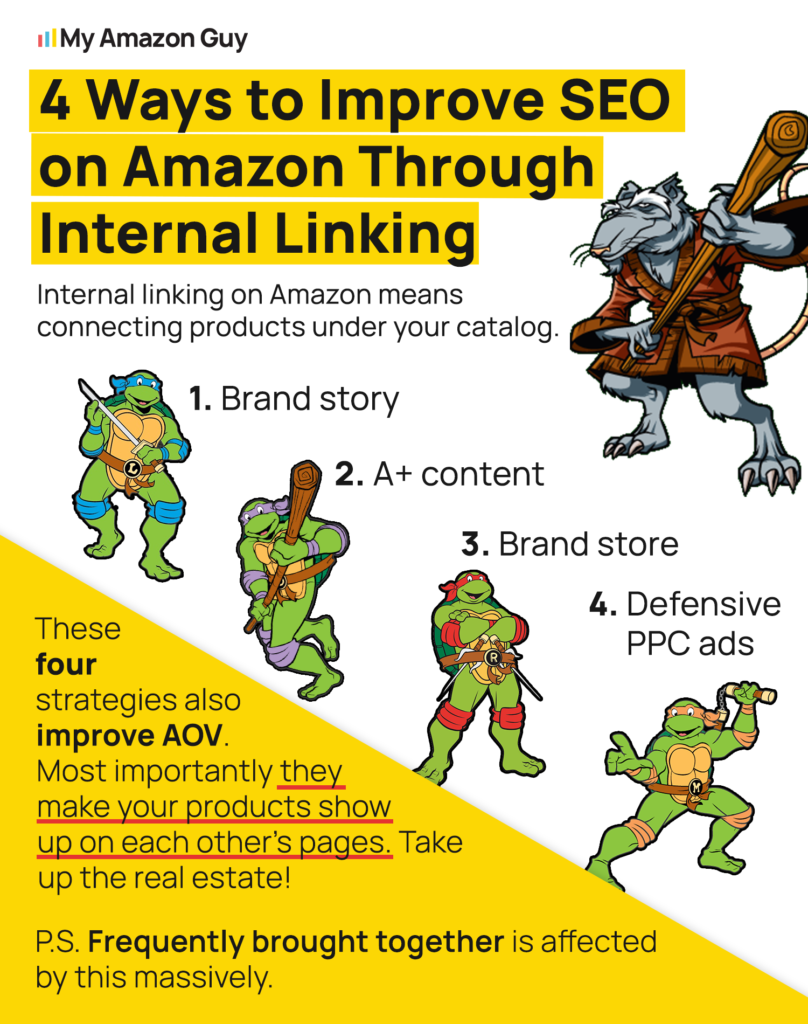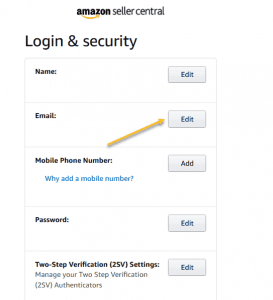Amazon offers vast opportunities for sellers, but rising customer acquisition costs have become a significant challenge. One key driver of these increasing costs is Amazon’s frequent fee hikes across fulfillment, storage, and advertising services.
For FBA sellers, these fee increases lead to higher costs for storing and shipping products, making it more expensive to acquire new customers. FBM sellers, while avoiding some FBA fees, face their own challenges, such as competing with Prime-eligible FBA listings and managing higher shipping costs.
These rising costs make it harder for both FBA and FBM sellers to maintain profitability and grow their customer base. Understanding and addressing these challenges is essential for sellers looking to stay competitive.
This article explores the specific customer acquisition challenges Amazon sellers face and offers solutions to help mitigate these costs.
Increase in Customer Acquisition Costs for Amazon FBA Sellers
Amazon FBA (Fulfillment by Amazon) allows sellers to outsource storage, packaging, and shipping to Amazon, offering perks like fast shipping and Prime eligibility. While this setup can boost sales, it also introduces challenges that drive up customer acquisition costs.
Increased competition, rising fees, and limited control over customer experience are key factors that make it harder for FBA sellers to stay profitable. This section will explore these specific challenges and how they impact customer retention and acquisition costs for FBA sellers.
1. Saturated Marketplace Leading to Higher Competition
Amazon’s marketplace is increasingly crowded, with new sellers joining daily. This surge in competition makes it difficult for FBA sellers to stand out, leading to higher advertising costs and thinner profit margins as more sellers compete for the same customers.
Example
Consider an FBA seller offering a popular product, such as wireless earbuds. With hundreds of similar products available on Amazon, this seller must compete against established brands, other third-party sellers, and even Amazon’s own private label products.
To get noticed, the seller might invest heavily in sales and marketing campaigns. Despite spending more on ads, the seller may struggle to achieve a return on investment due to the fierce competition and price wars.
Solution
- • Brand Building: Create a strong brand identity that resonates with customers. Utilize Amazon’s Brand Registry to access tools that enhance your brand presence, such as Sponsored Brands ads and enhanced content features.
- • Niche Targeting: Instead of competing broadly, sellers should focus on a specific niche within their product category where competition might be less intense. By targeting a narrower audience with tailored marketing, sellers can reduce competition and improve their chances of conversion.
- • Enhanced Product Listings: Invest in high-quality images, detailed descriptions, and enhanced A+ Content to make your product stand out. A well-optimized listing can improve organic rankings and reduce the reliance on paid advertising.
- • Leveraging Reviews and Social Proof: Actively encourage existing customers to leave reviews and highlight them in your listings. Positive reviews can differentiate your product from competitors and build trust with potential buyers.
2. Increased Cost-Per-Click (CPC) in Amazon Advertising
As competition intensifies on Amazon, the cost-per-click (CPC) for advertising campaigns has risen sharply. With more sellers bidding on popular keywords, advertising costs have become a significant expense.
This increase in CPC drives up the overall cost of customer acquisition, making it more expensive for FBA sellers to maintain visibility and attract new customers.
Example
An FBA seller running a PPC campaign for their home décor product notices that the CPC for targeted keywords “picture frame” has doubled over the past year. Despite maintaining the same budget, the seller is receiving fewer clicks and conversions, leading to higher costs for each customer acquired and squeezing profit margins.
Solution
- • Refine Keyword Strategy: Shift focus to long-tail keywords that are less competitive but highly relevant to the product. These keywords often have lower CPCs and can attract more qualified traffic.
- • Ad Spend Optimization: Utilize Amazon’s automated bidding tools, such as dynamic bidding or placement adjustments, to allocate budget more efficiently. This helps ensure that ads are shown to the most relevant audiences at the right time, maximizing ROI.
- • Enhance Product Listings: Improve product titles, descriptions, and images to increase the relevance of your listings. This can help improve organic search rankings, reducing dependence on paid ads and, in turn, lowering overall customer acquisition costs.
- • Leverage Data Analytics: Regularly review campaign performance data to identify which keywords and ads are underperforming. By cutting out ineffective ads and reallocating budget to higher-performing ones, sellers can improve their ad efficiency and reduce costs.
3. Rising FBA Fees and Fulfillment Costs
Amazon FBA offers sellers the convenience of outsourcing storage, packing, and shipping, but this convenience comes at a cost. Over the years, Amazon has gradually increased its FBA fees, including storage, fulfillment, and long-term storage fees.
These rising costs directly impact sellers’ profit margins, making it more expensive to acquire and fulfill customer orders. For many sellers, these escalating fees create a significant financial burden, especially when combined with other rising costs like advertising.
Example
An FBA seller who specializes in selling seasonal products, such as holiday decorations, faces steep long-term storage fees if their inventory doesn’t move quickly. With Amazon raising storage fees annually, this seller finds that the cost of keeping unsold inventory in Amazon’s warehouses significantly cuts into profits.
Additionally, the increased fulfillment fees mean that the seller must either raise prices—potentially losing customers—or absorb the costs, further squeezing margins.
Solution
- • Inventory Management: Optimize inventory levels to avoid excess stock and minimize long-term storage fees. Regularly analyze sales data to predict demand more accurately and adjust orders accordingly.
- • Product Bundling: Consider bundling products to increase the average order value, which can help offset higher fulfillment fees. Bundling can also reduce the number of individual units stored, lowering storage costs.
- • Review Pricing Strategy: Reevaluate your pricing strategy to ensure it accounts for rising fulfillment costs. Consider using dynamic pricing tools to adjust prices based on demand, competition, and costs.
- • Diversify Fulfillment Methods: Explore using a mix of FBA and FBM to balance costs. For products with lower turnover or high storage fees, fulfilling them through FBM might be more cost-effective.
However, know that switching to FBM can also lead to a negative outcome. Check this video on how our Amazon agency helped a client understand why their sales plummeted despite lowering the shipping costs:
Key Points:
- • Consequences of Switching to FBM: A client discovered that this change led to unexpected challenges.
- • Importance of Margin Analysis: The team suggests evaluating the trade-offs between cost savings and revenue impact.
- • Logistical Hurdles: Issues with fulfillment and delivery led to further operational setbacks.
- • Significant Impact on Sales: The shift has resulted in a notable decline in monthly revenue, raising concerns.
4. Limited Control Over Customer Experience and Engagement
Using Amazon FBA means sellers give up control over key aspects of the customer experience, such as packaging, shipping, and customer service. This lack of control can lead to inconsistent branding, packaging issues, and delays in customer support, all of which can negatively impact customer satisfaction and increase the cost of acquiring and retaining customers.
Example
An FBA seller of premium skincare products has a marketing team that proposed a plan to offer a luxury unboxing experience for customers.
However, with Amazon handling packaging, the seller can’t control how the product is presented. If the packaging is subpar or damaged, it can lead to dissatisfied customers, negative reviews, and increased returns.
Solution
- • Enhanced Product Listings: Invest in high-quality images, detailed product descriptions, and A+ Content to set clear expectations for customers before they purchase. This helps reduce misunderstandings and potential dissatisfaction.
- • Use Amazon Brand Registry: Enroll in Amazon’s Brand Registry to access tools that allow for better brand representation, such as enhanced content and sponsored brands ads. These tools can help sellers create a more consistent brand experience despite the limitations of FBA.
- • Monitor Feedback: Regularly review customer feedback and address any issues promptly. Engaging with customers through the feedback system can help resolve problems and demonstrate a commitment to customer satisfaction, even if Amazon handles the direct customer service.
- • Consider Hybrid Fulfillment: For products where brand experience is crucial, consider using a hybrid fulfillment model, where certain high-value or brand-sensitive items are fulfilled through FBM to maintain control over packaging and customer interactions.
5. Decreased Organic Visibility and SEO Challenges
With increasing competition and changes in Amazon’s search algorithms, FBA sellers find it harder to rank their products organically. The dominance of paid ads in search results further reduces organic visibility, making it challenging to acquire a new customer without heavy advertising spend.
Example
An FBA seller of fitness equipment sees their product drop in search rankings for the “yoga mat” keyword despite a well-optimized listing. Algorithm changes and an influx of sponsored listings push them lower, forcing the seller to spend more on ads to regain visibility.
Solution
- • Focus on SEO Optimization: Continuously refine product titles, descriptions, and bullet points with relevant keywords to improve organic ranking.
- • Utilize Enhanced Content: Leverage A+ Content and high-quality images to increase conversion rates, which can boost organic rankings.
- • Increase Engagement: Encourage customer reviews and ratings, as they play a crucial role in Amazon’s search algorithm and can improve visibility.
- • Diversify Traffic Sources: Drive external traffic from social media, email marketing, or blogs to your Amazon listings to supplement organic reach.
Increase in Customer Acquisition Costs for Amazon FBM Sellers
Amazon FBM (Fulfillment by Merchant) gives sellers control over their own storage, packaging, and shipping, but this comes with challenges that drive up customer acquisition costs.
Without the benefits of Amazon’s logistics network or Prime eligibility, FBM sellers struggle more with visibility and competitiveness. As competition intensifies and customer expectations grow, FBM sellers face rising costs in marketing and logistics, making new customer acquisition more challenging.
This section will examine these specific challenges and suggest strategies to overcome them.
1. Challenges in Competing with FBA Listings
FBM sellers often struggle to compete with FBA listings due to the advantages FBA offers, such as Prime eligibility and faster shipping.
Customers tend to prefer Prime-eligible products, which can lead to lower visibility and fewer sales for FBM sellers. This puts FBM sellers at a disadvantage, making it more difficult and costly to attract customers.

Example
An FBM seller offering kitchen gadgets notices that their products are consistently outranked by an FBA seller selling the same products in search results. Despite competitive pricing, their sales lag behind because FBA listings are Prime-eligible and offer faster shipping, which are major selling points for customers.
Solution
- • Improve Product Listings: Enhance product titles, descriptions, and images to make your listings more appealing and informative.
- • Offer Competitive Shipping: Provide fast and reliable shipping options, and consider offering free shipping to attract customers.
- • Leverage External Traffic: Drive traffic to your Amazon listings through social media, email marketing, or other channels to boost visibility.
- • Consider Merchant Fulfilled Prime (MFP): Enroll in MFP to offer Prime benefits while maintaining control over fulfillment.
2. Higher Shipping and Logistics Costs
FBM sellers handle their own shipping and logistics, which often results in higher costs compared to using Amazon’s FBA service. These costs include warehousing, packaging, and shipping, as well as managing returns.
The added complexity and expense can make it difficult to offer competitive prices and shipping options, leading to higher customer acquisition costs.
Example
An FBM seller of handmade jewelry finds that managing their own shipping costs is more than expected. Between paying for storage space and shipping supplies, and dealing with varying shipping rates, the overall costs reduce their profit margins.
This makes it challenging to compete with FBA sellers who can offer faster, often cheaper, shipping through Amazon.
Solution
- • Optimize Shipping Processes: Negotiate better rates with carriers and streamline packaging to reduce costs.
- • Use Third-Party Logistics (3PL) Services: Partner with a 3PL provider to handle warehousing and shipping more efficiently and at potentially lower costs.
- • Offer Flat-Rate Shipping: Simplify your shipping strategy with flat-rate shipping to attract customers while managing costs effectively.
- • Improve Inventory Management: Keep inventory levels optimized to reduce storage costs and avoid overstocking.
3. Difficulty in Building and Maintaining Customer Trust
FBM sellers struggle to build customer trust since they handle their own shipping and customer service. Inconsistent delivery times, packaging issues, and slower responses can lead to negative reviews, making it harder to acquire and retain customers compared to FBA sellers who benefit from Amazon’s reliable logistics.
Example
An FBM seller of organic skincare products faces negative reviews due to delayed deliveries and inconsistent packaging. These issues damage their reputation, making it tough to compete with FBA sellers who offer more reliable service.
Solution
- • Ensure Reliable Shipping: Partner with reputable carriers and provide accurate delivery estimates to avoid delays.
- • Improve Packaging Quality: Invest in consistent, high-quality packaging that reflects your brand and protects the product during transit.
- • Enhance Customer Service: Respond to customer inquiries promptly and resolve issues quickly to maintain a positive customer relationship.
- • Encourage Customers to Give Feedback: Actively seek customers to give feedback by asking them for pictures of using the product.

4. Limited Access to Advanced Marketing Tools and Programs
FBM sellers often lack access to Amazon’s advanced marketing tools like Prime promotions and Enhanced Brand Content, which are more accessible to FBA sellers. This limitation reduces their visibility and competitiveness, leading to higher customer acquisition costs as they must invest more in alternative marketing strategies.
Example
An FBM seller struggles to compete with FBA listings because they can’t participate in Prime deals or use Enhanced Brand Content. To compensate, they spend more on external advertising, which increases their overall marketing costs.
Solution
- • Leverage External Marketing Channels: Use social media, email marketing, and influencer partnerships to drive traffic to your Amazon listings.
- • Focus on SEO: Optimize your product listings with effective keywords and high-quality images to improve organic search rankings.
- • Explore Amazon’s Available Programs: Take advantage of Amazon tools that are accessible to FBM sellers, such as Sponsored Products and Amazon Stores, to enhance visibility.
- • Consider Hybrid Fulfillment: For key products, consider using FBA temporarily to access Prime and other advanced marketing benefits.
5. Increased Cost-Per-Click (CPC) in Amazon Advertising
FBM sellers face rising cost-per-click (CPC) rates in Amazon advertising due to increased competition. With more sellers bidding on the same keywords, advertising costs have escalated, making it more expensive to attract customers through paid ads.
This rise in CPC directly impacts the overall cost of customer acquisition, making it harder for FBM sellers to maintain profitability.
Example
An FBM seller of kitchen gadgets notices that their CPC for the target keywords “kitchen scissors” has doubled over the past year. Despite increasing their ad budget, the seller sees fewer clicks and conversions, leading to higher costs for each customer acquired and squeezing profit margins.
Solution
- • Refine Keyword Strategy: Focus on long-tail keywords with less competition to lower CPC.
- • Optimize Ad Spend: Use Amazon’s automated bidding tools to allocate budget more efficiently.
- • Enhance Product Listings: Improve listings to boost organic rankings and reduce reliance on paid ads.
- • Leverage External Traffic: Drive traffic to Amazon listings through social media and other channels to supplement paid ads.
Solving the Rise in CAC
Rising customer acquisition costs are a significant challenge for Amazon FBA and FBM sellers, driven by increased fees, competition, and logistical complexities. However, with a better understanding of these challenges, sellers can implement strategies like niche marketing, optimizing listings, leveraging external traffic, and managing logistics more effectively.
By refining SEO, balancing between FBA and FBM, and staying proactive, sellers can better control expenses and drive sales. Addressing these issues with a clear strategy enables sellers to navigate Amazon’s marketplace successfully and achieve long-term business growth.
Are you having a hard time managing your Amazon business? Contact our Amazon agency to get the help you need today!





